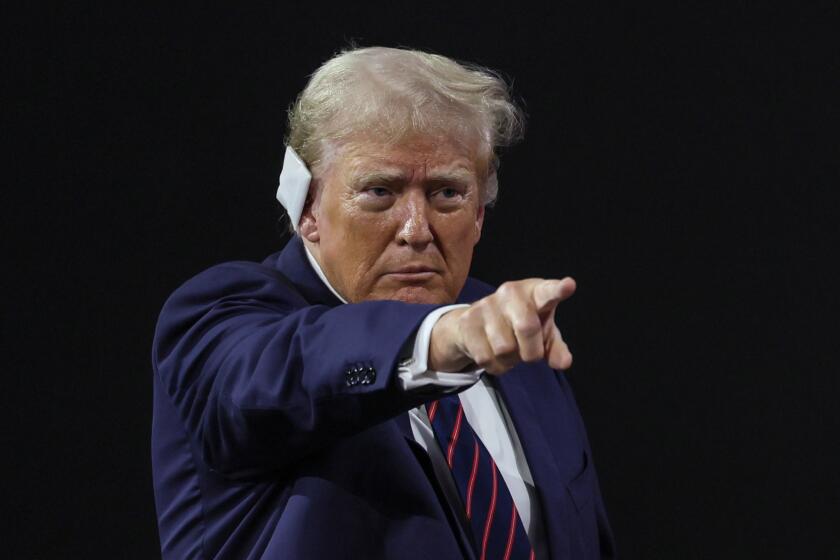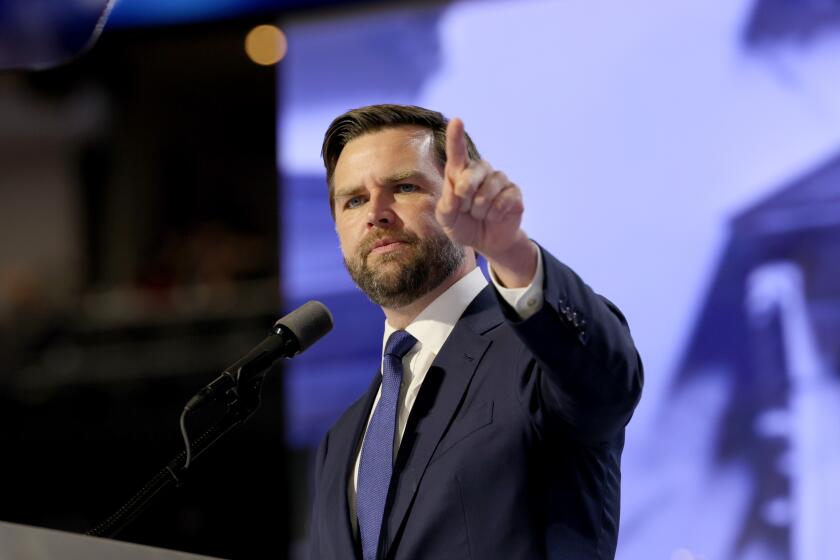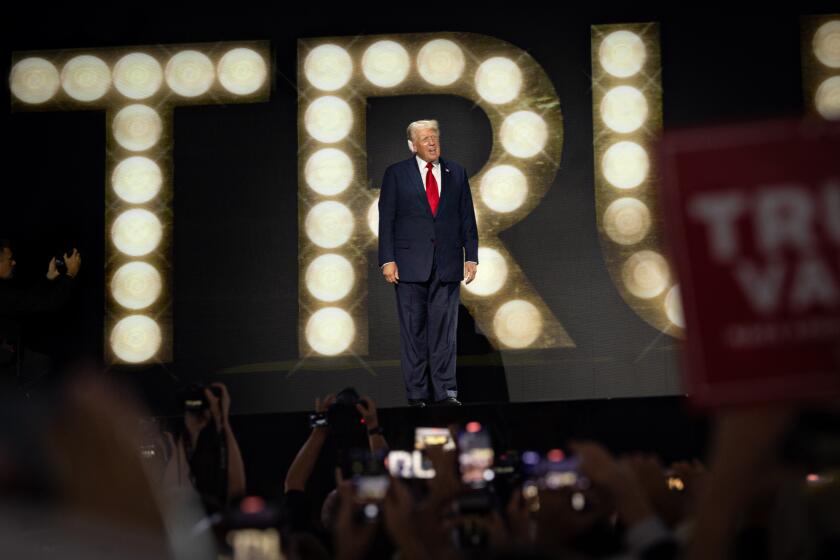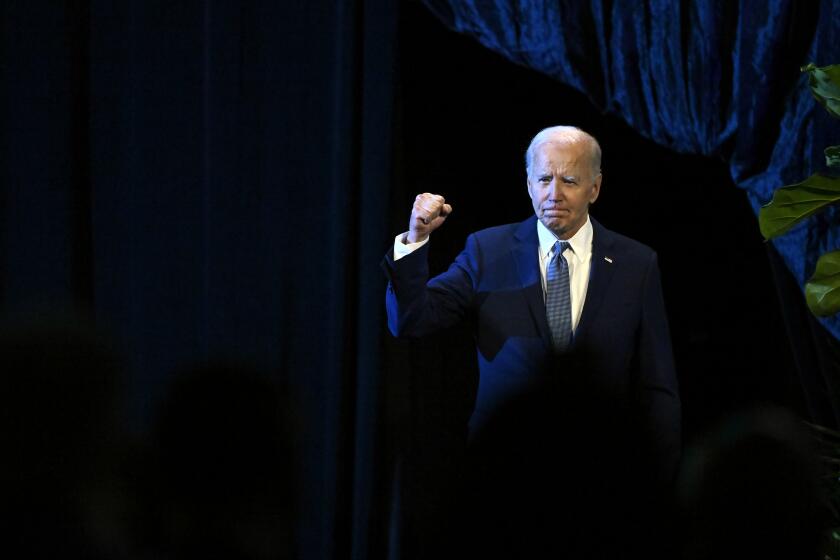Column: We were promised a ‘softer’ Donald Trump. What we got was a fully Trumpified Republican Party
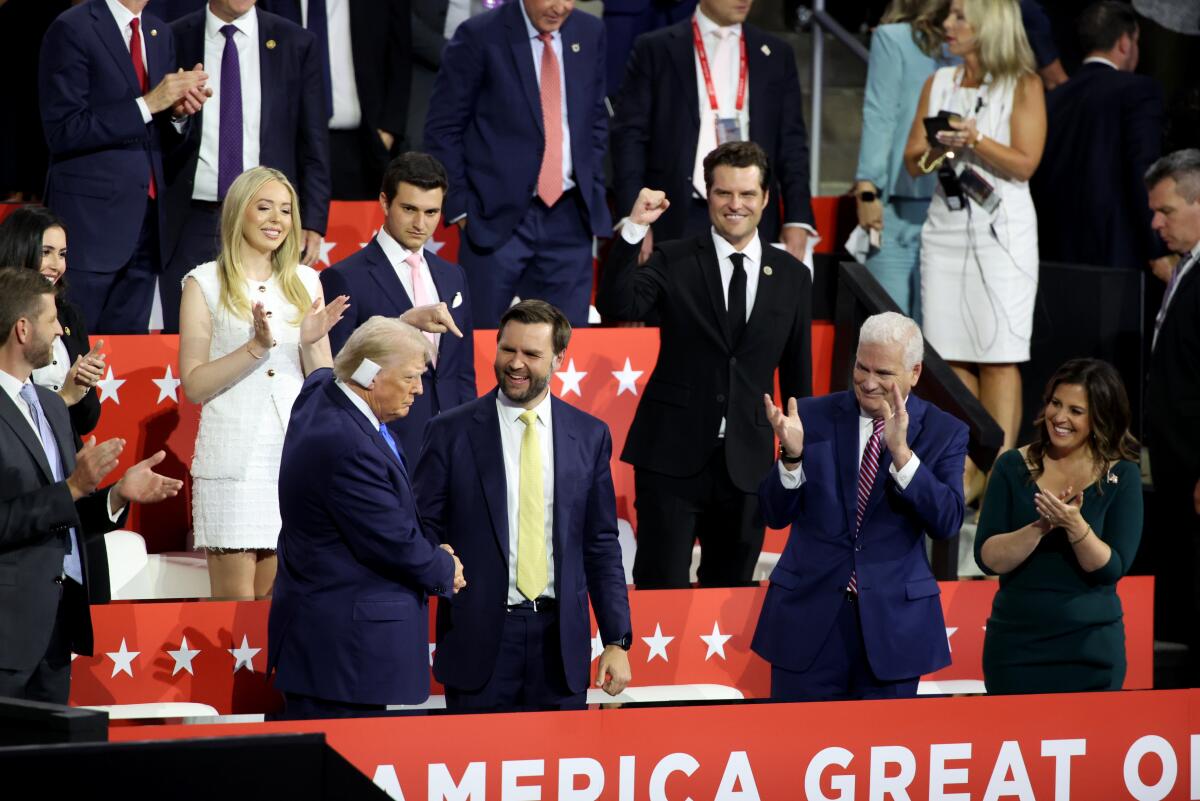
- Share via
WASHINGTON — Donald Trump couldn’t restrain himself.
The former president’s aides had promised that his acceptance speech at the Republican National Convention would showcase a “softer,” more conciliatory Trump — and, for perhaps 20 minutes, it did.
But for viewers who watched the whole 92-minute stem-winder, which devolved into a meandering list of bogus claims and well-worn grievances, the lesson was that there is no New Trump. If anything, this year’s version of Trump is even Trumpier than before — one committed to cementing the populist transformation of the GOP for at least another generation.
So the convention in Milwaukee ended with its mission only half accomplished.
Political conventions are lumbering anachronisms, but they survive because they serve two purposes. First, they ratify a choice of nominee and unify and inspire party activists. Then they take advantage of free television time to present their message to the uncommitted but persuadable voters they need to win.
This week’s convention ratified not only Trump’s third nomination, but also the lasting triumph of his grievance-based MAGA ideology over the rest of the GOP. It brought skeptical holdouts like former South Carolina Gov. Nikki Haley back into the Trumpist fold (even though she drew boos) and produced a show of party unity.
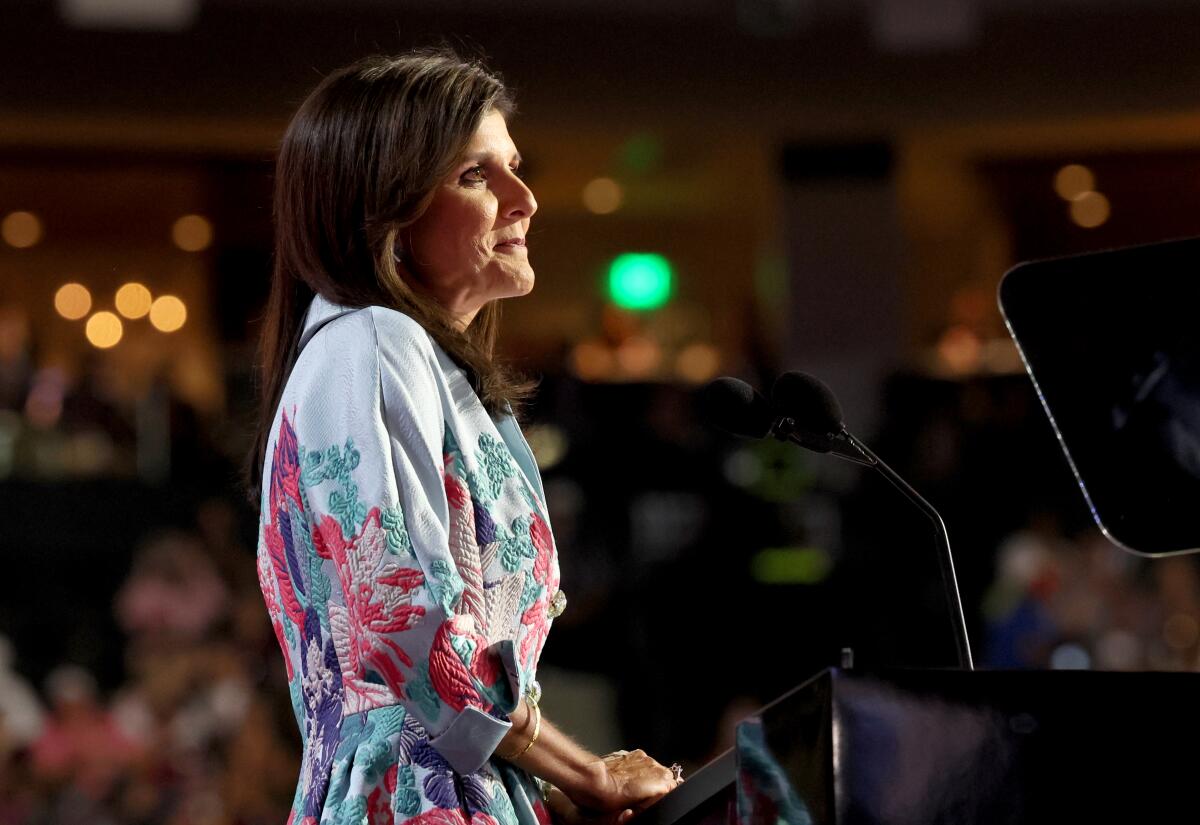
But when it came to a message that might persuade suburban voters, women and others in the center of the electorate that this year’s Trump is an improvement over previous models, the convention fell short — a missed opportunity for a candidate who has never won more than 47% of the popular vote.
Donald Trump began his Republican acceptance speech with a subdued and nondivisive tone. It didn’t last as he later called for mass deportations among other promises.
The first time Trump won the GOP nomination, in 2016, it was a hostile takeover by an insurgent with weak Republican credentials. Dissidents like Texas Sen. Ted Cruz and Ohio’s then-Gov. John Kasich warned that the New York real estate mogul was taking the party down a path to destruction.
The second time, in 2020, Trump’s nomination was automatic, the traditional act of a party denominating an incumbent president.
This time, the convention made it clear that the old business-dominated, “country club” Republican Party of Richard M. Nixon, Ronald Reagan and the two George Bushes is long gone.
“Trump has realigned the parties in a way that wasn’t there before,” said Geoffrey Kabaservice, author of “Rule and Ruin,” a history of modern Republicanism. “Almost every white working-class voter is going to be a Republican. Almost every college-educated voter is going to be a Democrat” — a reversal of the norm for more than half a century. “That realignment appears likely to last several decades at least.”
The most striking evidence is the nominee’s choice of Ohio Sen. J.D. Vance for vice president.
Trump’s vice president pick, J.D. Vance, spent time in San Francisco, founding a Silicon Valley technology investing firm.
The 39-year-old populist was the Trumpiest of the three finalists; North Dakota Gov. Doug Burgum and Florida Sen. Marco Rubio had roots in the party’s pre-Trump establishment.
In his convention speech, Vance made it clear that, like Trump, he blames old-style Republicans like the Bushes for the nation’s ills as much as he blames Democrats.
“From Iraq to Afghanistan, from the financial crisis to the Great Recession, from open borders to stagnating wages, the people who govern this country have failed and failed again,” he said.
Vance’s selection may have partly reflected electoral strategy: He could help the ticket win white working-class voters in the industrial swing states of Wisconsin, Michigan and Pennsylvania. But it was also a signal of the direction Trump wants the party to take in 2028.
Trump’s acceptance speech, making him his party’s nominee for a third time, culminates a week of worship at the Republican National Convention.
“Vance is a generational play, not an electoral play,” Democratic strategist David Axelrod said.
In a second Trump administration, Vance would not act as a restraining influence, as Burgum or Rubio might have, but as an intensifier of Trump’s populist instincts.
Vance has been more explicit than Trump on his desire to end U.S. aid to Ukraine immediately. “I don’t really care what happens to Ukraine, one way or the other,” he said in 2022.
Intriguingly, Vance has broken from GOP orthodoxy — and from Trump’s positions — on several economic issues. He has said he does not think cuts in corporate taxes, a key part of Trump’s agenda, are necessary. He has suggested he could support a $20 minimum wage, anathema to most business leaders.
Some of the most interesting battles of a second Trump administration could center on those issues.
“What you have in this ticket is a weird amalgam of plutocratic populism,” Kabaservice said. “It’s incoherent and inconsistent. It’s not clear which parts Trump has signed onto. After all, which part of his agenda is most likely to pass? I think the answer is big corporate tax cuts.”
President Biden is ‘absolutely’ in the race for a second term, his campaign leader says amid growing speculation that he is preparing to withdraw.
Trump’s acceptance speech was also a weird amalgam — between the kinder, gentler nominee his aides had hoped to showcase and the angry, resentful candidate he has been for most of the last decade.
On Thursday morning, daughter-in-law Lara Trump, vice chair of the GOP, promised that the acceptance speech would reveal “a bit softer version” of the nominee, who she said had been deeply affected by his brush with death after being wounded in a gunman’s assassination attempt.
But after a long description of the assassination attempt and a brief appeal to national unity — “We must not criminalize dissent or demonize political disagreement,” Trump said — he resumed demonizing President Biden and other Democrats, including “crazy Nancy Pelosi,” accusing them of “destroying our country.”
Trump’s definition of “unity,” it turned out, did not include mutual respect or bipartisan cooperation. It boiled down to accepting his policies and dropping every federal prosecution he faces.
“If Democrats want to unify our country, they should drop these partisan witch hunts,” he said.
Most of the address — much of which departed from his written text, as Trump usually does — was a loop of greatest hits from Trump’s stump speeches. It included a torrent of bogus claims, accusations and yet another admiring mention of the “late, great” fictional cannibal, Hannibal Lecter. The only sign of restraint was that this time, he did not use the word “vermin” to describe his political opponents or promise to prosecute them if he reaches the White House.
If he had accomplished the change in tone that his aides sought to broaden his appeal, he might have paved a path for his party to a popular-vote majority and control of the House of Representatives and Senate. But the speech he gave probably kept alive the doubts many voters have about his fitness for office.
And he gave Democrats an opening they can exploit — but only if they can settle on a nominee of their own.
More to Read
Sign up for Essential California
The most important California stories and recommendations in your inbox every morning.
You may occasionally receive promotional content from the Los Angeles Times.
